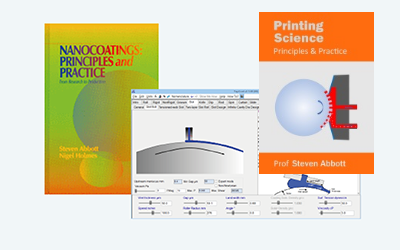Grinding
Quick Start
This isn't an app, just an illustration of the point made about Milling, that it's basically impossible to go from large primary particles down to nano-sized ones.
Different techniques also have their trade-offs; some do a great job at the start then slow down rapidly, others go steadier for longer.
The only reason we have nano-sized pigments via grinding is that their primary particles are nano-sized, and the grinding/milling breaks down the larger lumps
Grinding
Grinding, like milling, seems encouraging at first. Large particles tend to decrease in size very rapidly. But the rapid progress doesn't last and many grinding processes cease to achieve anything useful after a while. This is not the fault of the technology or the manufacturer, it is a problem inherent in the physics of grinding.
Here are shown the experimental data from an excellent study by Schilde and colleagues, Carsten Schilde, Caroline Mages-Sauter, Arno Kwade, H.P. Schuchmann. Efficiency of different dispersing devices for dispersing nanosized silica and alumina., Powder Technology, 207, (2011), 353 – 361.. Results from four of the devices they used are shown:
- Dissolver: (Dispermat CA60: VMA-Getzmann GmbH)
- 3-Roll mill: (Exakt 80 SE: Exact)
- Kneader: (HKD-T0.6: IKA)
- Stirred media mill: (Labstar, Netzsch Feinfabrik GmbH) & (PML-V/H: Drais)
Note that three techniques are very encouraging at the start but fail rather quickly. The stirred media (ball) mill is less effective at the start but keeps on going.
In general the rule of making nanoparticles from large particles is "Don't even bother to try". The only exception is if the large particles are agglomerates in which case there is some modest hope of success. But wouldn't it have been better to have kept the particles in their original size rather than allowing them to agglomerate?


